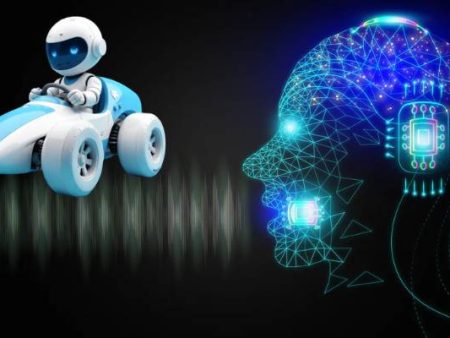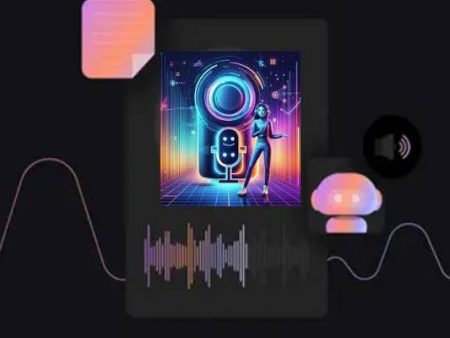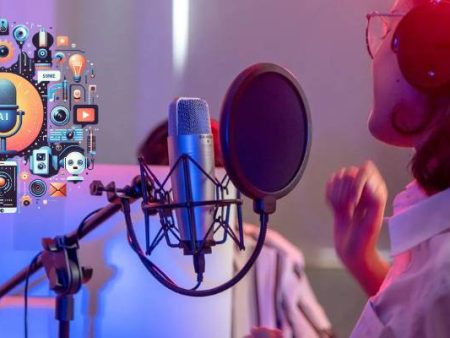Not long ago, the idea that a computer could speak with emotion, subtle intonation, or a recognizable accent felt like sci-fi.
Now, today, synthetic voices are everywhere: in navigation systems, virtual assistants, audiobooks, dubbing, and even attempts to resurrect familiar voices of the past. What once felt mechanical is becoming eerily lifelike.
This transformation is not just technical — it’s cultural. Voices are deeply personal. They carry identity, trust, emotion.
As we tiptoe (or sometimes sprint) into a world where voice production transforming becomes business as usual, we need to understand both the possibilities and the pitfalls.
In this piece I’ll walk through (a) how we got here, (b) the technical foundations, (c) key use cases, (d) dangers and contested zones, (e) regulation & detection, and (f) my own perspective on where things may head.
You’ll see I don’t shy away from discomfort — I think we must face the trade-offs honestly.
The Trajectory: From Monotone Robots to Expressive Speech
Early foundations
Way back, text-to-speech systems were robotic blips and monotones: “This is a test of the speech system.”
But major breakthroughs changed the game. WaveNet, for instance, introduced a deep neural network to model raw audio waveforms, producing far more natural speech than earlier TTS systems.
That shift showed that modeling the waveform (rather than concatenating bits of recorded speech) gives more fluidity and nuance.
Over time, innovations layered in neural architectures, attention models, and then transformer-style models for speech and audio. These advances improved prosody, pronunciation, emotional tone, and cross-speaker adaptation.
Market growth and adoption
We’re not just talking lab demos. The market is skyrocketing. In 2023, the global AI voice generators market was estimated at USD 3.5 billion, and projections peg it to expand to over USD 20 billion+ by 2030 under aggressive growth scenarios.
Meanwhile, the specific voice cloning segment is also ballooning — valued at ~USD 1.45 billion in 2022, with steep expected CAGR through 2030.
What this tells me: there’s both momentum (capital, demand, entrepreneur energy) and pressure (to commercialize quickly) in the field.
State today: more expressive, real-time, on-device
Recent reports (e.g. from voice AI state surveys) show a shift: we’re not satisfied with bland, flat voices any more. We want nuance, emotion, real-time responsiveness, and local (on-device) execution for latency and privacy.
The “voice agent” as a first-class entity is emerging: models that listen, respond, interject appropriately, modulate tone — that’s the next frontier.
The rise of compact, local speech models (for devices) is crucial — in areas with weak connectivity or where privacy matters (e.g. medical, field work), you can’t rely on round-trip cloud inference.
So, the stage is set. We’re not just converting text to speech — we’re giving machines the ability to act via voice.
Key Use Cases & Transformative Applications
Let me walk you through areas where synthetic voices are shaking things up — some delightful, some controversial.
Accessibility & speech restoration
One of the more heartwarming uses: restoring voice to people who lost it (e.g. due to illness, surgery, ALS). When your voice is gone, synthetic voice can bring back presence. This aligns with the idea that human will to communicate should—even if mediated by machines—be honored.
In some instances, companies allow users to record their own voice when healthy, to build a “digital twin” that can speak later. But that raises questions (which we’ll explore) around voice rights, consent, etc.
Virtual assistants, call centers, and agents
Customer service bots are evolving. Instead of canned responses, imagine a system that uses a familiar voice (branded or individual) and speaks with subtle emotion, clarity, and context-awareness. Combined with LLMs and speech understanding, these agents are becoming more humanlike.
Plus, for podcasting, advertisement, narration, dubbing — content creators are increasingly adopting synthetic voices to speed production and cut costs. Some creators license their own voices to build scalable voice clones for repurposing content.
Interactive entertainment, avatars, and gaming
Games and virtual worlds want dynamic dialogue. Synthetic voices can let non-player characters (NPCs) speak in context, respond fluidly, or tell stories live. You might visit a virtual world and hear voices that respond in real time.
Avatar platforms allow users to speak via virtual personas. You type or hint something, and your avatar speaks in a styled voice. That’s a fusion of synthetic voice + animation.
Multilingual dubbing, translation & localization
One laborious task in media is dubbing — replacing voices for different languages. Synthetic voice can shorten that pipeline.
If your voice clone can map to different languages (maintaining voice identity), that opens doors. But it’s tricky: preserving lip sync, emotional matching, cultural calibration.
Branding & voice identity
Brands are starting to adopt custom voices — imagine your bank, your travel app, your audiobook label having a signature voice. It strengthens identity and consistency across products. That’s a shift from humans speaking in all cases to voices as brand assets.
Challenges, Risks, and Ethical Fault Lines
Here’s where I get uneasy. The power of synthetic voices invites misuse, uncertainty, and ambiguity. Let me lay out the core problems (and some workarounds).
Voice cloning without consent / identity theft
One of the most dangerous zones: voices cloning without permission. Someone can grab a snippet of audio (maybe social media, a video, a voicemail) and replicate your voice. That lets them impersonate you — do phishing, fraud, blackmail. This has moved from theory to reality.
Calls made in someone’s voice, asking for money from loved ones — that’s not sci-fi, that’s happening. Given that in many systems voice is used for authentication or trust, the stakes are high.
Misinformation, deepfakes & political risks
What if synthetic voices are used to produce false speeches by leaders? We’ve seen cases where AI models replicate political voices and generate convincing but false statements. A study found that popular voice cloning tools generated false voice statements 80% of the time in tests.
When voices misinformation side enters the picture, democratic discourse is at risk. The misuse potential is real, especially in polarized or fragile societies.
Bias, exclusion, accent issues
AI systems encode bias. Some voices are better supported than others. Accent coverage may be uneven: certain dialects or linguistic groups may not be synthesized well or may be stereotyped.
A recent study of synthetic voice services showed performance disparities across regional English accents and pointed to how synthetic voice might reinforce linguistic privilege or exclusion. Also, voices modeled for “queer” styles may be smoothed away — losing identity nuance.
Thus, synthetic voice is not neutral — it reflects dataset, design, and intent.
Detection arms race & fragility of defenses
Can we reliably tell whether a voice is synthetic or genuine? Research says it’s hard. Synthetic speech detectors (SSDs) often struggle when audio is manipulated (noise, re-encoding, filtering). One paper spells out how attackers can bypass detection via adversarial audio tweaks.
Another method, DeepSonar, monitors neuron activation patterns to flag fake voices — promising, but not foolproof. arXiv
So we’re in an arms race: voices get better, detection lags, misuse finds loopholes.
Emotional deception & psychological risks
Synthetic voices carry emotional weight. If someone hears a familiar voice — say a deceased parent — it can trigger grief, longing, or confusion. That emotional realism can be weaponized. The line between comfort and manipulation is thin.
Legal and intellectual property murkiness
Who owns a voice? If your voice is cloned, do you have rights over the clone? Some laws require consent or disclosure, but many jurisdictions lag.
In some U.S. states, deepfake/voice-cloning laws exist; in Europe, the AI Act may treat voice cloning as high risk. But many cross-border, open source, or emergent use cases fall outside existing rules.
Also, models are often trained on scraped audio (podcasts, YouTube). Some voice actors claim their voices were used without permission.
Detection, Safeguards, and Solutions
Given the threats, how can we defend? Here are key strategies and promising paths.
Technical defenses & watermarking
One approach is embedding inaudible “watermarks” inside synthetic speech so detection tools can flag clones. If every synthetic voice carries a trace, we can more reliably trace origin.
Another is using neuron activation signatures (DeepSonar) or model fingerprinting to detect fakes. But as mentioned, adversarial attacks can sometimes break them. So detection must be robust and adaptive.
Governance frameworks & consent models
Ethical frameworks like PRAC3 (Privacy, Reputation, Accountability, Consent, Credit, Compensation) push for structured norms: always get explicit consent, maintain reputational safety, trace usage, credit original voices, and compensate when needed.
Some companies propose logs of voice usage, transparency reports, and opt-in voice dataset contributions.
Disclosure & labeling
One idea: all synthetic voices should carry a disclosure — “this is a synthetic voice” — in a visible or audible way. That helps listeners know they’re not hearing a human. But bad actors may drop that label.
Regulation & legal guardrails
Governments can mandate that deepfakes or synthetic voices require permission, restrict impersonation, or enhance penalties.
Some already do: the FCC in the U.S. extended regulation so AI-generated voices in robocalls are illegal. Also, the EU AI Act may classify voice cloning as a high-risk AI domain requiring accountability.
But regulation must be nuanced — overly strict rules may stifle innovation or deny benefits to small creators.
Table: Pros, Cons, Risks & Mitigations
Here’s a compact view of what synthetic voice systems bring — and what to watch out for.
| Benefit / Opportunity | Use Case Examples | Risks / Downsides | Mitigation Strategies |
| Accessibility & voice recovery | Restoring speech for patients | Identity theft, emotional misuse | Strong consent, opt-in datasets |
| Efficiency & scale | Dubbing, audio narration, virtual agents | Loss of authenticity, unemployment | Hybrid approaches (human + synthetic) |
| Brand voice / identity | Signature voice for companies | Monotony or disconnection | Periodic human refresh, emotional tuning |
| Localization & translation | Multilingual dubbing | Cultural mismatch, lip-sync errors | Local review, human correction |
| Personalized assistants | Customized voice agents | Privacy leak, misinterpretation | On-device models, private data handling |
| Deepfake / misinformation | Political impersonation, scams | Trust collapse, harm to democracy | Detection, regulation, watermarking |
The Human Angle: Why This Matters to Us
I want to pause and reflect. This is not just geek stuff. These voices affect our sense of trust, authenticity, and relationship.
- When we hear a voice, we feel connection. A synthetic voice that nails our friend’s tone could trigger emotional trust—potentially dangerous if misused.
- Our identities are tied to our voices; losing control of that feels like losing part of self. I personally feel uneasy imagining a cloned version of me saying something I never said.
- For the vulnerable — the elderly, isolated, people with disabilities — synthetic voices can be a companion. The same tech that can connive can also comfort.
- There will be generational and cultural divides. Some will adopt synthetic voices eagerly; others will resist, mistrust, or fear them. The nuance of voice — accent, inflection, cadence — carries culture and belongs to communities.
So yes, this isn’t just bytes and audio. It’s personal.
Future Trends & Predictions (My Speculations)
I’ll risk being wrong here — but that’s part of thinking.
- Voice-as-identity tokenization
I expect we’ll see “voice NFTs” or registered voice rights. People may “own” their voice profiles and license them. But this is dangerous — akin to trading biometric identity — so watch for backlash. - Hybrid voice models (human + AI)
In many cases, fully synthetic voices won’t replace humans. Instead, people will adopt hybrid workflows: humans record seed samples, AI fills in or adapts. This retains authenticity while gaining scale. - Regulated voice registries / certification bodies
Just like domain registration, perhaps we’ll have bodies that certify “this voice comes from verified speaker X” or “this synthetic voice was licensed.” That helps with tracing responsibility. - Voice marketplaces & monetization
People or celebrities may offer voice clones as digital assets. Influencers could license their voice to ad campaigns, or creators could adopt standard voices. - Deep integration into IoT, AR/VR & ambient computing
As ambient computing becomes common (your desk, your room, your glasses talk to you), synthetic voice will be the “skin” of interaction. Voice UI will be primary in mixed reality. - Greater adversarial arms race
As voices get better, detection must evolve. We’ll see more subtle watermarking, multi-modal checks (lip sync + voice + behavior), and legal traceability. - Cultural resistance & voice ethics movements
Some groups will push back — e.g. “we refuse synthetic voice in news media,” or “voices must not be cloned without penalty.” That tension will stay central.
Challenges I Still Worry About (and You Should, Too)
- Trust collapse: As clones become common, hearing a voice will no longer guarantee authenticity by default. We’ll need reliable external verification.
- Economic dislocation: Voice actors, narrators, dubbing studios may lose income or be pressured to accept lower pay. The creative labor equation changes.
- Privacy erosion: Voice is biometric. Unauthorized clones, surveillance, voice data leaks — these are privacy nightmares.
- Regulatory mismatch: Tech moves faster than law. Many regions lack appropriate frameworks, meaning bad outcomes may emerge before rules catch up.
- Emotional harm or manipulation: Using voices to manipulate emotions (e.g. in fraud, therapy, persuasion) is unsettling. We may not always know when we’re being influenced.
Recommendations & Ethical Guardrails (What Should Be Done)
Here are actions I believe stakeholders — companies, researchers, governments, users — should adopt.
For developers and companies
- Always ensure explicit, informed consent when building voice clones.
- Use watermarking or traceable signatures in synthetic speech.
- Be transparent: let users know when a voice is synthetic.
- Build robust detection and fallback systems.
- Limit usage: e.g. disallow use in political, medical, or legal contexts without oversight.
- Involve ethicists and domain experts early.
For researchers
- Focus not just on better voice generation, but better detection, adversarial robustness, and interpretability.
- Study social impact: how different communities react, which voices are marginalized.
- Build inclusive datasets (accent diversity, languages, styles) to reduce bias.
For regulators and lawmakers
- Define rights around voice: consent, ownership, compensation.
- Mandate disclosures for synthetic voice content.
- Update laws to criminalize harmful impersonation or misuse.
- Encourage industry standards and cross-border cooperation.
For end users
- Be skeptical: if someone’s voice sounds odd, check authenticity.
- Don’t share long, clear voice recordings publicly unnecessarily.
- Advocate for transparency and accountability from services you use.
- Support voices rights — if your voice is cloned without your consent, push back.
Why This Subject Matters (My Reflection)
When I started writing this, I felt a twinge: synthetic voices might erode something deeply human. Voice is not just sound — it’s presence, memory, intimacy.
But I also feel excitement: this is powerful tech that, if stewarded well, can amplify human agency, help those silenced, streamline creative workflows.
I don’t believe synthetic voice will replace all human speech. I think it will coexist, fill gaps, scale human voice. But we must do it responsibly. The line between tool and trick is fine, and we must guard it.
When someone hears a voice, they expect authenticity. That expectation must be honored — or the foundation of trust cracks.
So yes: voice production transforming is real, ongoing, and accelerating. We have to shape it—not passively accept it.
I hope this article gives you a map — the hills, valleys, dangers, vistas — for understanding how synthetic voices are reshaping communication. Use it, critique it, cite it. Let’s keep asking: what kind of voice future do we want?


